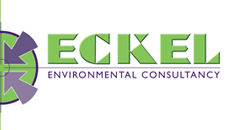
PROFESSIONAL OCCUPATIONAL HYGIENE & SAFETY
As an employer the health and safety of your staff is your responsibility. To keep your business running smoothly it is in your best interests to provide a hygienic and safe working environment.
To protect your staff and keep your business running smoothly Eckel Environmental can provide a range of services tailored to your requirements, in order to provide that assurance your staff need and as employer is your duty to provide.
Our consultancy provides assessments, investigations and knowledge on the following specific areas of health and safety, however if you have a particular requirement outside of this list please make contact and one of our consultants will offer appropriate advice.
Services provided:
COSHH Assessments:
Control of Substances Hazardous to Health (COSHH) risk assessments carried out by experienced chemist/occupational hygienists.
With the introduction of the Control of Substances Hazardous to Health Regulations (COSHH), employers have a duty to assess the risk of exposure to chemicals and other hazardous substances to safeguard the health, safety and welfare of their employees.
The COSHH regulations require a systematic approach to be adopted where hazards are identified and necessary precautions determined to prevent or minimise exposure. A comprehensive COSHH assessment is the starting point in any exposure control management programme.
Workplace monitoring for harmful dusts, vapours, fumes, gases and toxic metals in compliance with the COSHH regulations:
Our Experienced Occupational Hygienists are able to carry workplace exposure monitoring which aims to recognise, evaluate and minimise the risk of operative ill health from hazardous substances in the workplace.
The Control of Substances Hazardous to Health (COSHH) Regulations place a duty on employers to undertake assessments to evaluate the risks to health when using hazardous substances in the workplace.
The results of workplace monitoring will highlight exposure to hazardous substances and assess the effectiveness of existing control measures, such as Personal Protective Equipment (PPE) and Local Exhaust Ventilation Systems.
The results are evaluated against the approved prescribed Workplace Exposure Limits as given by EH40 which has been approved by the Health and Safety commission.
Back to Top
European Union Noise at Work Regulation
What is it?
In 1993 an EU (European Union) proposal for a Physical Agents Directive was made, which looked to establish a framework for the regulation of physical agents at work applying initially to noise, vibration, optical radiation and non-optical electromagnetic fields.
After political agreement on the Vibration Directive in November 2000, the Swedish Presidency introduced a proposal for a Noise Directive in January 2001. This would repeal the existing 1986 Noise Directive (86/188/EEC) which was implemented in the UK by the Noise at Work Regulations 1989 and in the other European Union Countries around the same time. In 2005 further changes were introduced the following guidelines for noise exposure are the current regulations employers should be working to.
The 1st and 2nd Action Levels are 80dB(A) and 85dB(A) respectively. 1st and 2nd Peak Action Levels of 135dB(C) and 137dB(C) Peak respectively. A Maximum Exposure Level Limit of 87dB(A) and 140dB(C) Peak at the ear will be introduced which includes any hearing protection.
Who does this affect?
The regulations affect all countries that are members of the European Union.
The European Directive can be used as a minimum requirement and member countries may implement different regulations as long as the minimum requirements are met.
What can Eckel provide you with?
Eckel Environment has experience assessing the noise levels of work spaces and can provide work place assessments and offer further advise in suitable noise control measures for the working environment or persons working in those conditions.
For more information, your National Government should be able to provide information about how the regulations will be implemented and when they will be introduced.
For changes in Noise Control at Work Regulations, click here.
Back to Top
Professional Occupational Hygiene:
Eckel Environmental can provide assessments and advise on prevention and control of bacteria and offer specific advice on the occupational hygiene in the work place.
Eckel Environmental Services are also able to conduct Fire Risk Assessments of Catering Extract Systems with due regard to the following guidelines:
BSRIA – Fire Risk Assessment – Catering Extract Ventilation
Regulatory Reform Fire Safety Order (RRFSO) 2005
HVCA DW172 Specification for Kitchen Ventilation Systems.
System Testing (Inspection/Monitoring)
Grease thickness levels will be monitored using a precision stainless steel wet film comb with a range thickness from 20-2000 micron. All testing will be conducted with regard to the guidelines given in HVCA Guide to Good Practice – Internal Cleanliness of Ventilation Systems TR/19 2005.
Back to Top
Indoor Air Quality Sick Building Syndrome:
The term "sick building syndrome" (SBS) is used to describe situations in which building occupants experience acute health and comfort effects that appear to be linked to time spent in a building, but no specific illness or cause can be identified. The complaints may be localized in a particular room or zone, or may be widespread throughout the building. In contrast, the term "building related illness" (BRI) is used when symptoms of diagnosable illness are identified and can be attributed directly to airborne building contaminants.
Eckel Environmental Services have the experience and expertise to carry out practical technical surveys which involves not only monitoring the environment for pollutants, bacteria fungi, yeast and moulds, volatile organic compounds, general building pollutants and the thermal environment but also have the experience and ability to survey the air handling systems with regard to supplying clean healthy air to the served areas.
Odour Threshold Analysis (Strange smell in the office):
With new or refurbished buildings the heating system, or just air movement, will drive off all the volatile organic compounds (VOCs) from the paints, carpets and furnishings etc. This mixture of chemicals can become trapped in the building along with all the other odours from personnel and materials used in the offices. With a lack of fresh air or even a reasonable air exchange rate, our experience would suggest that during the early months of occupation this pea soup of compounds could possibly cause ill health effects in susceptible or atopic individuals.
The majority of these volatile organic compounds are present in very low concentrations i.e. 0.1–1ppb (parts per billion). Therefore the technique required to identify these compounds has to be sensitive if we are to try and form an accurate picture of the air quality and the origins of any pollutants.
Back to Top
Legionella Risk Assessments:
The objective of the survey is to identify any building water systems that would adversely affect the risk of legionellos is, in accordance with the Approved Code of Practice and Guidance L8, Legionnaires’ Disease The Control of Legionella Bacteria in Water Systems as published by the Health and Safety Executive. Eckel Environmental also have the experience to offer independent advice on water treatment systems and offer a service to test water for microbiological and chemical contaminants.
Back to Top
Asbestos Identification and Surveys:
Eckel Environmental Consultancy offer building surveys (Type 1, 2 and 3) and asbestos register preparation, audits with risk assessments (duty to manage) and prioritization for compliance with the Control of Asbestos Regulations 2006.
All surveyors are qualified to BOHS P402 Building Surveys and Bulk Sampling of Asbestos. Independent UKAS laboratories are used for all our analysis.
Asbestos awareness training courses are also carried out as part of the mandatory training requirements under Regulation 10 of the Control of Asbestos Regulations 2006.
The Control of Asbestos Regulations 2006 came into force on 13 November 2006 (Asbestos Regulations - SI 2006/2739).
The Asbestos Regulations also include the ‘duty to manage asbestos’ in non-domestic premises. Guidance on the duty to manage asbestos can be found in the 'Approved Code of Practice The Management of Asbestos in Non-Domestic Premises', L127, ISBN 0 7176 6209 8.
The Regulations require mandatory training for anyone liable to be exposed to asbestos fibres at work (see regulation 10). This includes maintenance workers and others who may come into contact with or who may disturb asbestos (eg cable installers) as well as those involved in asbestos removal work.
When work with asbestos or which may disturb asbestos is being carried out, the Asbestos Regulations require employers and the self-employed to prevent exposure to asbestos fibres. Where this is not reasonably practicable, they must make sure that exposure is kept as low as reasonably practicable by measures other than the use of respiratory protective equipment.
The spread of asbestos must be prevented. The Regulations specify the work methods and controls that should be used to prevent exposure and spread.
Respiratory protective equipment is an important part of the control regime but it must not be the sole measure used to reduce exposure and should only be used to supplement other measures. Work methods that control the release of fibres such as those detailed in the Asbestos Essentials task sheets for non-licensed work should be used. Respiratory protective equipment must be suitable, must fit properly and must ensure that worker exposure is reduced as low as is reasonably practicable.
Approved Code of Practice Work with Materials containing Asbestos, L143, ISBN 0 7176 6206 3
Asbestos: the Licensed Contractors Guide, HSG 247, ISBN 0 7176 2874 4
Asbestos: The analysts' guide for sampling, analysis and clearance procedures, HSG 248, ISBN 0 7176 2875 2
Asbestos Essentials, HSG 210, ISBN 0 717618870
|





